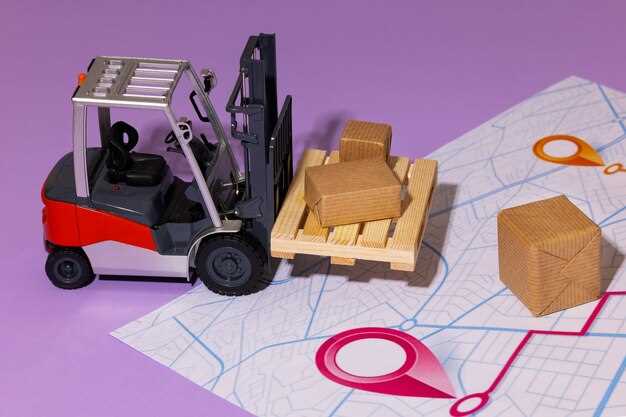
When it comes to the delicate task of moving valuable masterpieces from one location to another, every precaution must be taken to safeguard these irreplaceable treasures. The process of shipping and transporting art requires meticulous planning, specialized expertise, and state-of-the-art equipment. This article explores the essential measures and strategies that art collectors, galleries, and museums employ to ensure the protection and preservation of valuable pieces during transit.
Securing the Fragile Beauty: Artworks, whether they are paintings, sculptures, or other forms of creative expression, are often fragile and susceptible to damage. The first step in protecting these valuable pieces is to carefully assess their specific requirements for transportation. Each artwork demands a unique approach, taking into consideration factors such as size, weight, material, and vulnerability to environmental conditions. By understanding the intricacies of each piece, professionals can tailor their shipping methods to provide the utmost protection.
Shielding Against External Hazards: During transit, artworks face a myriad of potential hazards, including vibrations, temperature fluctuations, humidity, and physical impact. To counteract these risks, art handlers employ a variety of techniques and materials. Specialized crates, made from sturdy materials such as plywood or metal, are custom-built to fit each artwork precisely. These crates are lined with shock-absorbing materials, such as foam or padding, to minimize the effects of vibrations and impacts. Additionally, climate control systems are often installed within the crates to regulate temperature and humidity levels, ensuring the preservation of the artwork’s integrity.
Understanding the Risks of Art Transportation
When it comes to the transportation of valuable artwork, there are various risks that need to be carefully considered and addressed. The process of moving art from one location to another can expose it to potential dangers and hazards, which can result in damage or loss. It is crucial for art professionals and collectors to have a comprehensive understanding of these risks in order to implement appropriate measures to protect the artwork.
The Fragility of Art
Artworks, especially those made of delicate materials such as glass, ceramics, or paper, are inherently fragile and susceptible to damage during transportation. The vibrations, jolts, and sudden movements experienced during transit can cause structural damage, cracks, or breakages. Additionally, changes in temperature and humidity levels can lead to warping, fading, or deterioration of the artwork. It is essential to handle and package artworks with utmost care to minimize the risk of damage.
The Threat of Theft and Loss
Transporting valuable art pieces also poses the risk of theft or loss. Artworks can be attractive targets for criminals due to their high value and the potential for anonymity in the art market. Inadequate security measures, such as insufficient tracking systems or inadequate packaging, can make artworks vulnerable to theft. Moreover, accidents or mishaps during transportation, such as vehicle accidents or natural disasters, can result in the complete loss of the artwork. Implementing robust security protocols and utilizing reliable transportation services can help mitigate these risks.
Understanding the risks associated with art transportation is crucial for ensuring the safe and secure movement of valuable pieces. By recognizing the fragility of art and the potential threats of theft and loss, art professionals and collectors can take appropriate measures to protect their artworks and preserve their cultural and financial value.
Choosing the Right Packaging Materials
When it comes to ensuring the safe transportation of valuable artwork, selecting the appropriate packaging materials is of utmost importance. The right choice of materials can provide the necessary protection and security for the artwork during transit, minimizing the risk of damage or loss.
1. Cushioning Materials: It is crucial to use cushioning materials that can absorb shocks and vibrations during transportation. Opt for materials such as foam, bubble wrap, or air pillows to create a protective layer around the artwork. These materials help to prevent any impact or pressure that may occur during handling or movement.
2. Wrapping Materials: The wrapping materials used should provide a barrier against moisture, dust, and other environmental factors that can potentially harm the artwork. Consider using acid-free tissue paper or polyethylene film to wrap the artwork securely. These materials offer protection against humidity and prevent any chemical reactions that may occur between the artwork and the packaging.
3. Inner Containers: When shipping valuable artwork, it is advisable to place the wrapped piece in an inner container. This additional layer of protection can safeguard the artwork from any external pressure or impact. Inner containers can be made of materials like corrugated cardboard or custom-built wooden crates, depending on the size and fragility of the artwork.
4. Outer Containers: The outer container plays a vital role in protecting the artwork from external elements and potential theft. Choose a sturdy and durable outer container, such as a double-walled corrugated box, to provide an extra layer of security. Ensure that the outer container is properly sealed and labeled with appropriate handling instructions and fragile stickers.
5. Sealing and Securing: Proper sealing and securing of the packaging materials are essential to prevent any accidental opening or shifting during transit. Use strong packing tape to seal all edges and seams of the packaging. Additionally, consider using tamper-evident seals or security labels to provide visual evidence of any tampering attempts.
6. Documentation: Lastly, it is crucial to include detailed documentation of the artwork within the packaging. This documentation should include information such as the artwork’s description, condition, and any specific handling instructions. It is also advisable to include contact information for the sender and recipient, as well as insurance details if applicable.
By carefully selecting the right packaging materials and following these best practices, you can ensure the safe and secure transportation of valuable artwork, providing peace of mind for both the sender and recipient.
Securing Artwork for Safe Transportation
Ensuring the safety and protection of valuable artwork during transportation is of utmost importance. Properly securing artwork not only prevents damage but also provides peace of mind for both the sender and the recipient. This section will discuss essential measures and best practices to safeguard artwork during transit.
1. Packaging and Crating
One crucial step in securing artwork for safe transportation is proper packaging and crating. Artwork should be carefully wrapped using acid-free materials to prevent any chemical reactions that could damage the piece. Additionally, using cushioning materials such as foam or bubble wrap helps protect the artwork from impact during transit. The artwork should then be placed in a sturdy crate or box, ensuring it is tightly secured to prevent any movement or shifting.
2. Climate Control
Artwork is often sensitive to changes in temperature and humidity, which can lead to warping, cracking, or fading. To mitigate these risks, it is essential to maintain a controlled climate during transportation. This can be achieved by using climate-controlled vehicles or containers that regulate temperature and humidity levels. Monitoring devices should also be employed to ensure that the conditions remain within the acceptable range throughout the journey.
By following these best practices for securing artwork during transportation, art collectors, galleries, and museums can minimize the risk of damage and preserve the integrity of valuable pieces. Implementing proper packaging and crating techniques, along with maintaining a controlled climate, will help ensure that artwork arrives at its destination in pristine condition.
Utilizing Climate Control Measures
Ensuring the safe transportation of valuable artwork requires careful consideration of climate control measures. By implementing appropriate strategies, art professionals can protect delicate pieces from the potential damage caused by extreme temperature and humidity fluctuations during transit.
1. Temperature Regulation
One crucial aspect of climate control is maintaining a stable temperature throughout the shipping process. Extreme heat or cold can have detrimental effects on artwork, leading to warping, cracking, or fading. To mitigate these risks, it is essential to utilize temperature-controlled containers or vehicles equipped with climate control systems. These systems can maintain a consistent temperature range, providing a suitable environment for the artwork.
2. Humidity Control
Controlling humidity levels is equally important in protecting valuable artwork during transportation. High humidity can cause mold growth, while low humidity can lead to the drying out and cracking of certain materials. To prevent these issues, art professionals should consider using humidity control devices such as dehumidifiers or humidifiers, depending on the specific needs of the artwork. Monitoring humidity levels throughout the journey is crucial to ensure the preservation of the pieces.
Additionally, it is advisable to pack artwork in materials that can help regulate humidity, such as moisture-absorbing silica gel packets. These packets can help maintain a stable humidity level within the packaging, minimizing the risk of damage to the artwork.
3. Insulation and Shock Absorption
Proper insulation and shock absorption techniques are essential to protect artwork from temperature and physical shocks during transit. Using insulated packaging materials, such as foam or bubble wrap, can provide an additional layer of protection against temperature fluctuations. These materials also help absorb shocks and vibrations that may occur during transportation, reducing the risk of damage to the artwork.
Furthermore, it is crucial to secure the artwork within the packaging to prevent movement during transit. This can be achieved by using custom-made crates or padded containers that fit the artwork precisely, minimizing the potential for shifting or impact-related damage.
- Regularly monitor temperature and humidity levels during transit.
- Utilize temperature-controlled containers or vehicles.
- Consider using humidity control devices and moisture-absorbing materials.
- Use insulated packaging materials to protect against temperature fluctuations.
- Secure artwork within the packaging to prevent movement and impact-related damage.
By implementing these climate control measures, art professionals can significantly reduce the risk of damage to valuable pieces during transit, ensuring their preservation and longevity.
Hiring Professional Art Shippers and Handlers

When it comes to ensuring the safe transportation of valuable artwork, it is crucial to entrust the task to professionals who specialize in art shipping and handling. These experts possess the knowledge and experience necessary to protect your valuable pieces throughout the entire transit process.
Why Hire Professional Art Shippers and Handlers?
Professional art shippers and handlers are well-versed in the intricacies of handling delicate and valuable artwork. They understand the unique requirements and challenges associated with transporting art, including the need for specialized packaging, climate control, and security measures.
By hiring professionals, you can have peace of mind knowing that your valuable pieces will be handled with the utmost care and expertise. These experts are trained in proper handling techniques, ensuring that your artwork remains protected from any potential damage during transit.
What to Consider When Hiring Art Shippers and Handlers
When selecting a professional art shipping and handling service, there are several factors to consider:
- Experience: Look for companies with a proven track record in handling and shipping valuable artwork. Check their portfolio and client testimonials to gauge their expertise.
- Specialization: Ensure that the company specializes in art shipping and handling specifically, as this indicates their understanding of the unique requirements of transporting artwork.
- Insurance: Verify that the company provides comprehensive insurance coverage for your artwork during transit. This will protect you financially in case of any unforeseen incidents.
- Security: Inquire about the security measures implemented by the company to safeguard your artwork. This may include GPS tracking, 24/7 monitoring, and secure storage facilities.
- Customs and Documentation: If you are shipping artwork internationally, confirm that the company has experience in handling customs procedures and can assist with the necessary documentation.
By carefully considering these factors and selecting a reputable professional art shipping and handling service, you can ensure the safe and secure transportation of your valuable pieces.
Insuring Artwork for Peace of Mind

When it comes to safeguarding your valuable artwork during transportation, one crucial aspect that should not be overlooked is insurance. Insuring your artwork provides you with peace of mind, knowing that your investment is protected in case of any unforeseen events or accidents.
Securing insurance coverage for your artwork is essential, as it offers financial protection against potential risks such as theft, damage, or loss. By obtaining the right insurance policy, you can mitigate the financial impact of any unfortunate incidents that may occur during transit.
Before selecting an insurance policy, it is important to assess the value of your artwork accurately. This involves obtaining professional appraisals and documentation that establish the worth of your pieces. By having a clear understanding of the value of your artwork, you can ensure that you obtain adequate coverage that aligns with its true worth.
When choosing an insurance provider, it is crucial to select a reputable company that specializes in insuring artwork. Look for insurers who have experience in the art industry and understand the unique risks associated with transporting valuable pieces. They should offer comprehensive coverage that includes protection during transit, storage, and exhibition.
Additionally, it is important to carefully review the terms and conditions of the insurance policy. Pay attention to any exclusions or limitations that may apply, as well as the deductible amount. Understanding these details will help you make an informed decision and ensure that you have the appropriate coverage for your specific needs.
Remember to keep detailed records of your artwork, including photographs, descriptions, and any relevant documentation. These records will be invaluable in the event of a claim and can help expedite the insurance process. It is also advisable to regularly update your insurance coverage to account for any changes in the value or location of your artwork.
By insuring your artwork, you can protect your investment and enjoy peace of mind while it is in transit. Take the time to research and select the right insurance policy that provides comprehensive coverage tailored to your specific needs. With proper insurance in place, you can confidently transport your valuable pieces, knowing that they are protected against potential risks.
